Pros and cons
Ceramic tiles have many advantages:
| Pros of application | Cons of using |
|---|---|
| The rich variety of collections allows you to fit the tiles into the living room of any style. | Tile is a cold material and, if you do not install a warm floor system, it will be uncomfortable to be in such a living room. |
| Durable material will withstand any stress. | The slippery surface of glossy tiles is traumatic; such products are not recommended for use in a house where there are children or the elderly. |
| The tile is fireproof, therefore it is suitable for facing fireplaces. | Relatively high cost. |
| Ceramic products are easy to clean from dirt. | For high-quality cladding, it is better to invite specialists. |
What kind of tiles can be used in the hall?
Consider the types of products that are suitable for flooring and walls in the living room:
- Tile / ceramic tiles. Consists of a mixture of clay, sand and minerals. During the production process, it is fired and covered with glaze, thanks to which you can get any pattern on the surface and any texture. The most popular option.
- Porcelain stoneware. Ceramic pressed with granite chips. Possesses exceptional strength and resistance to high temperatures. A variety of designs are also achieved by glazing the surface.
- Plaster. Eco-friendly material for quality imitation of brick or masonry on the walls of the living room... It is lightweight and comes in a wide range of colors. Disadvantages: fragility of the material, instability to moisture and embossed surface that accumulates dust.
- Clinker room. It is considered an improved type of ceramics, as it has a more complex composition. Thanks to long-term firing and pressing, durable, wear-resistant products of various shapes are obtained. Convenient to install.
Shown here is a living room in neutral tones, where the TV area imitates a marble surface, which decorates the room and draws attention to itself.
What can be tiled in the living room?
By functional purpose, there are floor, wall and decorative tiles.
Floor
Due to its high traffic, living room flooring must be resistant to damage. An anti-slip matte or rough texture is required for safe movement. If the living room is combined with the dining room, the products should be easily cleaned of dirt.
The photo shows a stylish living room with an unusual tiled floor. Shades of red enliven the interior in neutral tones.
Wall
The wall tiles are lightweight for comfortable cladding. A fashionable trend is the decoration of the wall in the form of a panel. Natural stone looks colorful in the interior of the living room.
Niche
Facing the niche with ceramics is an original idea, as a result of which the wall in this area looks very impressive.
Fireplace
Due to its fire resistance, tiles - ideal for cladding a fireplace... In addition, it gives off heat well and thereby increases its efficiency.
The photo shows a cozy cottage in a rustic style. A fireplace with bright decor adds a special touch to the interior.
Arch
Facing the opening with tiles imitating a stone or brick can be called a classic. This is one of the most popular options for decorating an arch.
The photo shows a spacious living room leading to the kitchen with arch tiled with rectangular tiles.
Color palette
Since the range of ceramic coatings on the modern market is wide, the choice of color scheme in the living room depends only on the taste of its owner.
- For connoisseurs of light interiors, white, gray, beige tiles for the floor and walls are suitable.
- The black color makes the space heavier, and for the floor it is also an impractical solution, since dirt and damage are clearly visible on it.
Today, manufacturers offer companion materials for wall decor: pre-selected shades and drawings will help to professionally transform the interior of the living room.
The photo shows a bright living room with bright colored accents. The "heavy" beamed ceiling is successfully compensated by the white floor.
Terracotta flooring is suitable for a country house: this floor looks natural and cozy.
The tiles in saturated shades - yellow, red, green - will become a bright accent in the interior. To avoid overloading, the rest of the decor must be selected in neutral colors.
Examples of tile layout
The most common type of tile is square. It can be laid in the classical way ("seam in seam") or diagonally. Products of various sizes and patterns are successfully combined. To play up the floor in an unusual way, tiles of the same shade have a border instead of a plinth. Long rectangular products are usually stacked "randomly" in imitation of natural materials: wood or brick.
The photo shows an interior where several types of tiles are combined. Curly and mirrored decorate the walls. Glossy porcelain stoneware surrounds the contrasting wood floor.
Tile design
The various shapes, textures and shades of ceramic coatings allow the owner of the apartment to decorate the living room in any way.
To expand the space of the room and give it airiness, the walls are decorated with mirror tiles. Coating "wood imitation" will add a touch of natural naturalness and comfort to the atmosphere. You can also combine tiles with laminate by cutting out a curly line and closing it with an elastic sill. Marbled products look great in the interior of the hall. Ornamental patterns are used to imitate carpet.
The photo shows an airy living room with sky-colored details. Mirrored tiles emphasize the lightness of the furnishings and visually add space.
Connoisseurs of country style will like the option of facing in the form of a panel of combined tiles of different colors. This technique is called patchwork.
The shape of the tiles today is the most diverse - designers offer not only squares and rectangles, but also rhombuses, polyhedrons in the form of "honeycombs", figured products with rounded elements.
With the help of tiles "like a stone" you can decorate the walls of the living room (both completely and partially), border windows, columns and doorways. The mosaic is suitable for cladding fireplaces, as well as decorating walls: it is recommended to place it with inserts so as not to overload the space.
Kitchen-living room cladding ideas
If the apartment has a living room combined with a kitchen, the tiled flooring will do just fine. The standard practical option is a kitchen apron. Recently, the rectangular "hog" has gained popularity: it looks advantageous in any style.
In the photo there is a kitchen-living room, decorated with hexagonal "honeycomb" in pastel colors. They protect not only the walls, playing the role of an apron, but also the floor.
Porcelain stoneware flooring in the kitchen area is a good idea for practical people.Wear-resistant porcelain stoneware will not wear out, absorb moisture and grease, or deteriorate under the influence of cleaning agents. Also, in a large room, using tiles, it is easy to carry out zoning.
In the photo there is a kitchen-living room, the division of zones occurs by combining floor tiles of different colors and shapes.
Photo of the living room in various styles
Tiles in the living room will successfully fit into the framework of a modern style. It is characterized by minimalism, clarity of lines. For the living room, a single-color coating without pronounced patterns is suitable, which will serve as a background for a profitable display of furniture and accessories.
The classical direction is the complete opposite of the modern one. Classics in the interior are replete with decorative details. For decoration, materials are suitable that emphasize the nobility and tranquility of this style: light colors, patterns, imitation "marbled". For the floor, a covering that imitates dark parquet will be a good solution.
French Provence is popular with people seeking home comfort. Ceramics with a texture like stone and wood, as well as floral ornaments or sketches of rural life will help to serve these purposes.
Loft-style tiles are widely used: imitation of brickwork has become the hallmark of this trend. Large ceramic rectangles of gray colors look original, which convincingly imitate a wall of concrete blocks.
High-tech is characterized by functional design details and geometric shapes. Its main idea is the reflection of modern technologies in the interior. Rounded furniture and spotlights combined with mirrored walls will be a great solution for this style. A 3D tile with a three-dimensional multidimensional pattern will fit well.
In the photo there is a loft-style attic, boldly combining tiles with both a pattern and an imitation of bricks.
Photo gallery
Thus, the tiles in the living room are practical, easy to clean and look impressive in any interior.

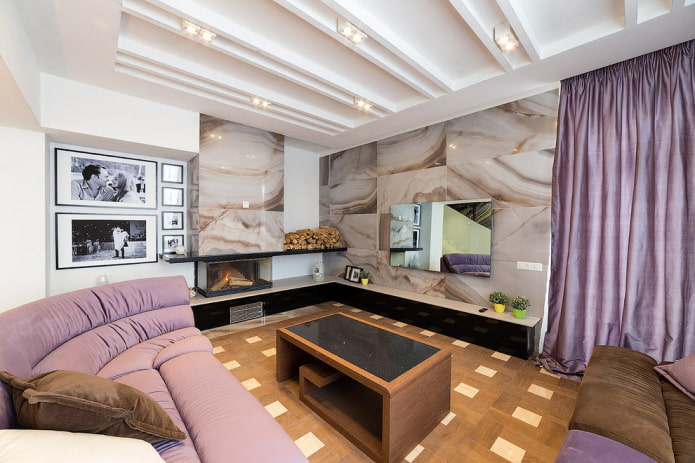
 10 practical tips for arranging a small kitchen in the country
10 practical tips for arranging a small kitchen in the country
 12 simple ideas for a small garden that will make it visually spacious
12 simple ideas for a small garden that will make it visually spacious

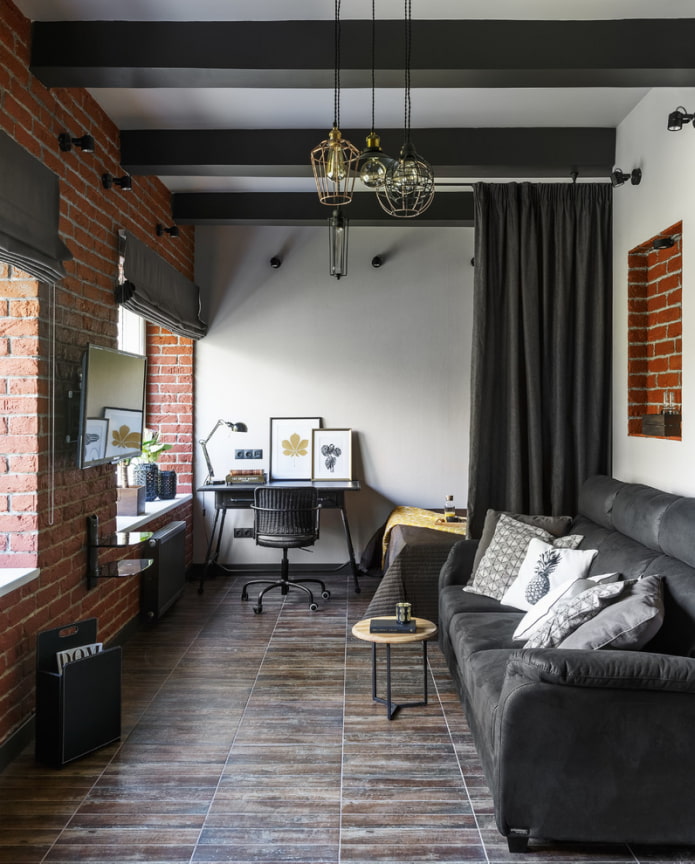
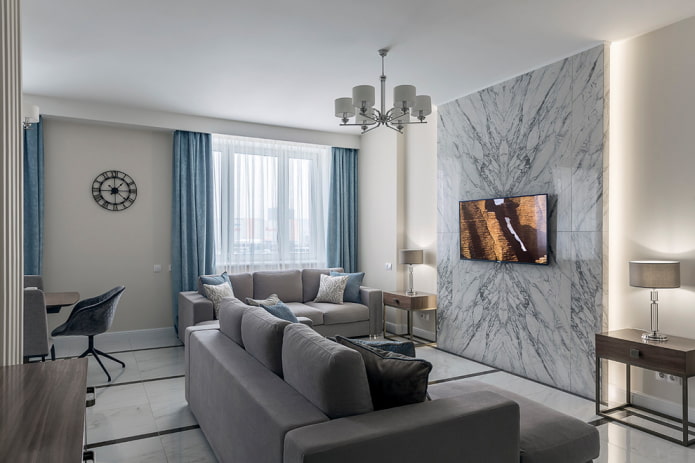
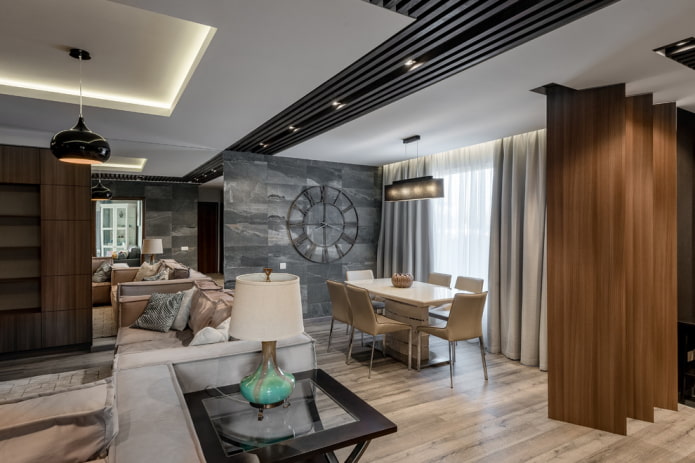
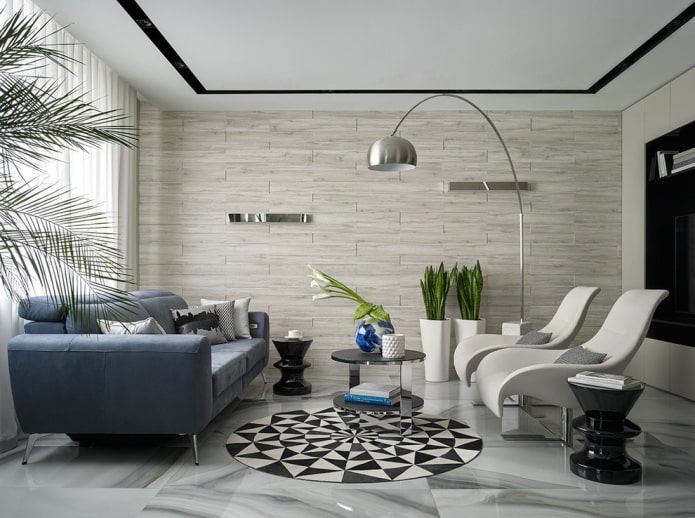
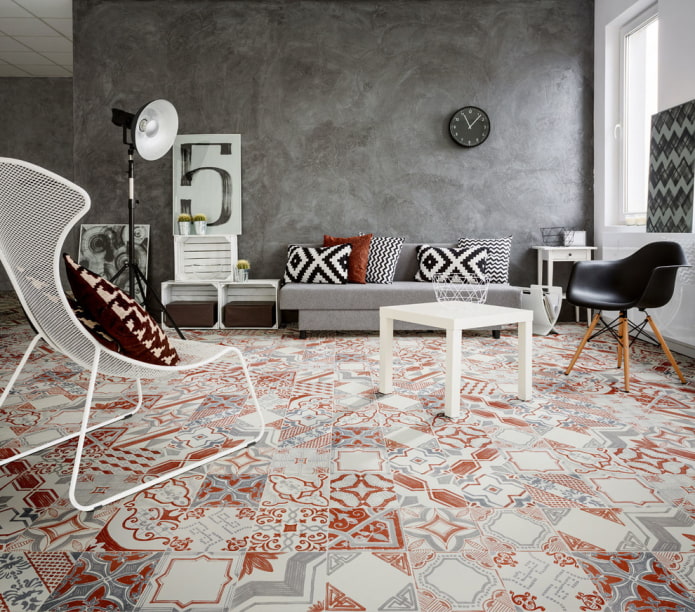
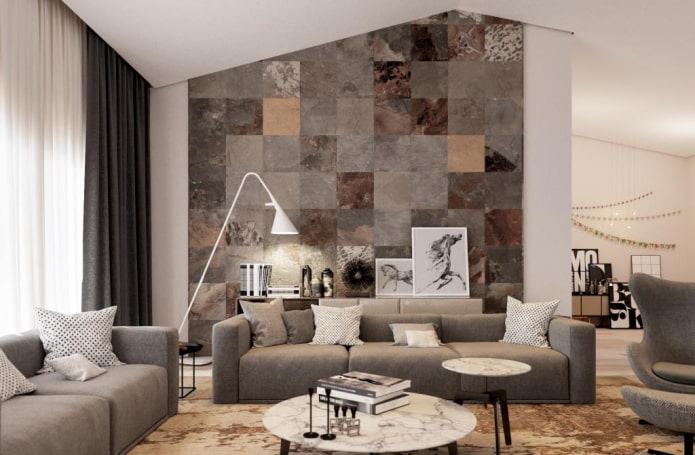
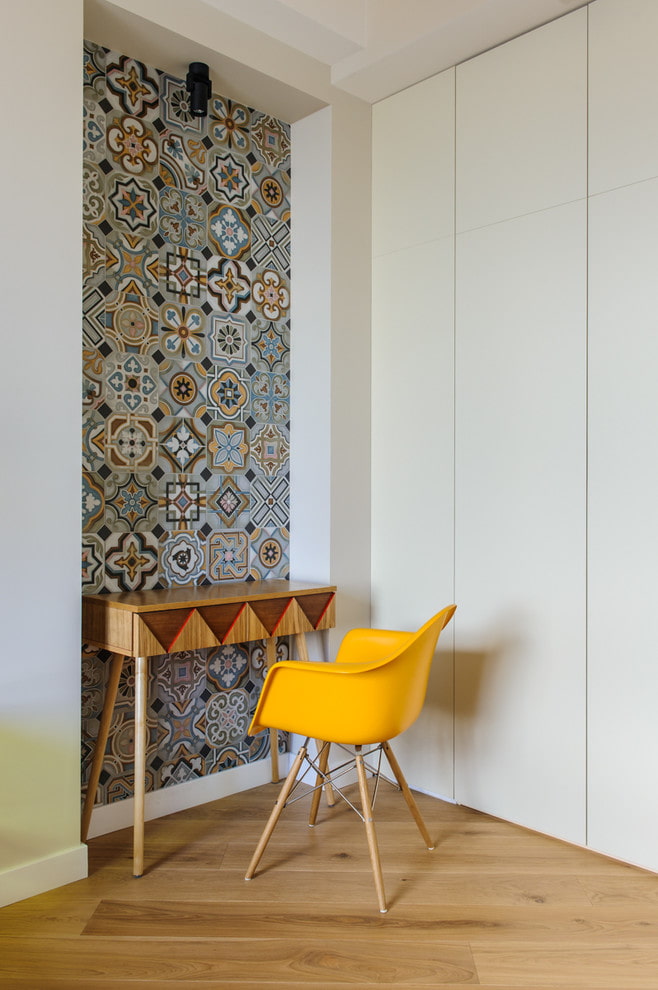

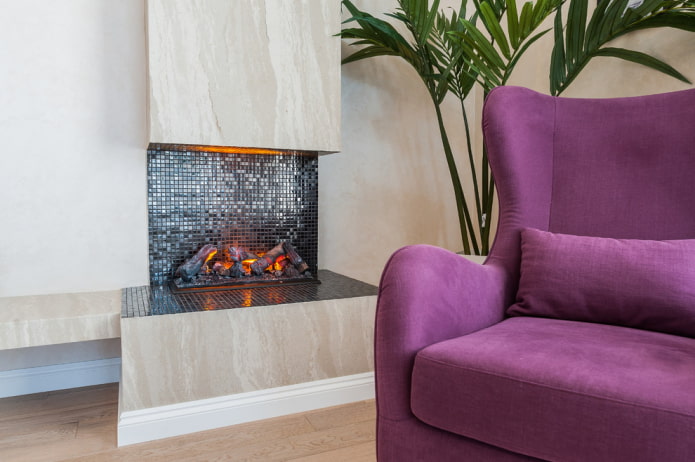
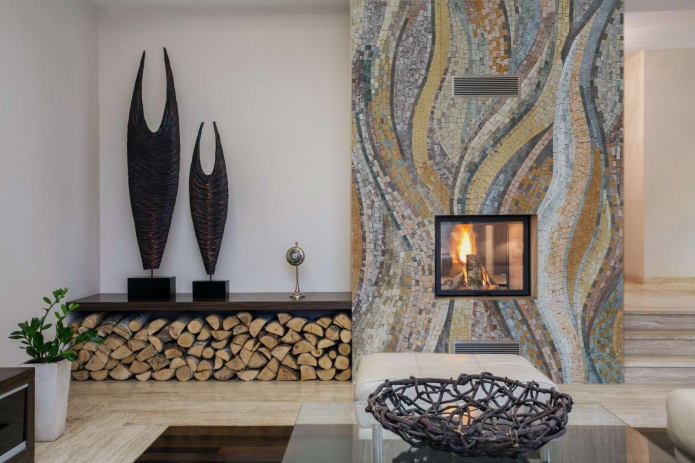
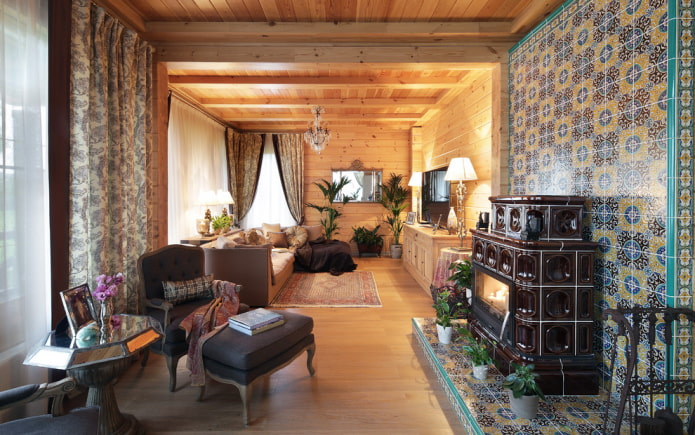
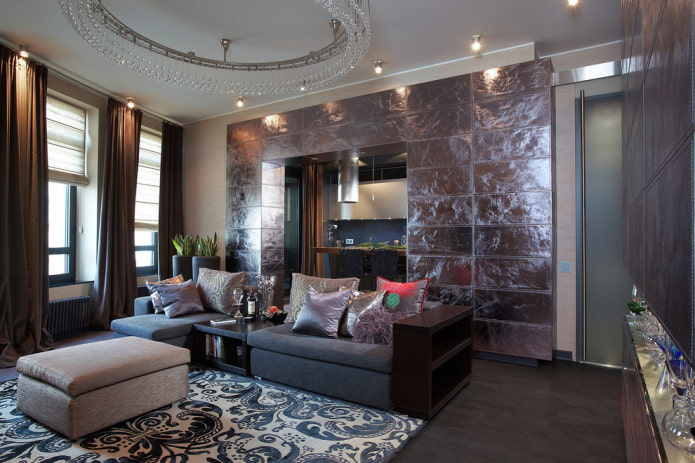





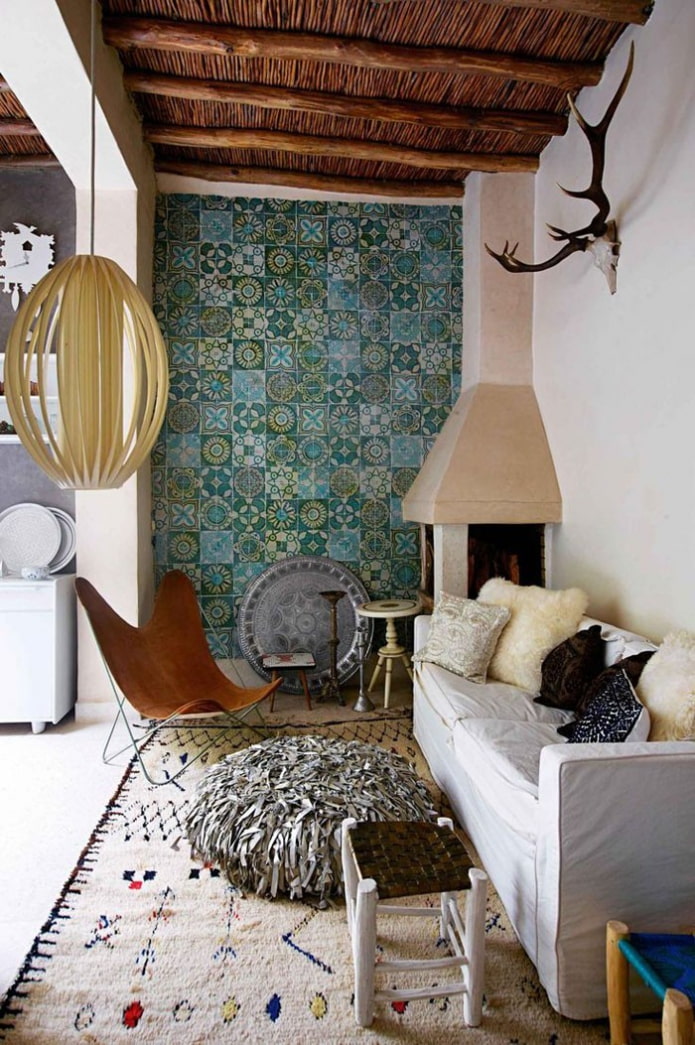
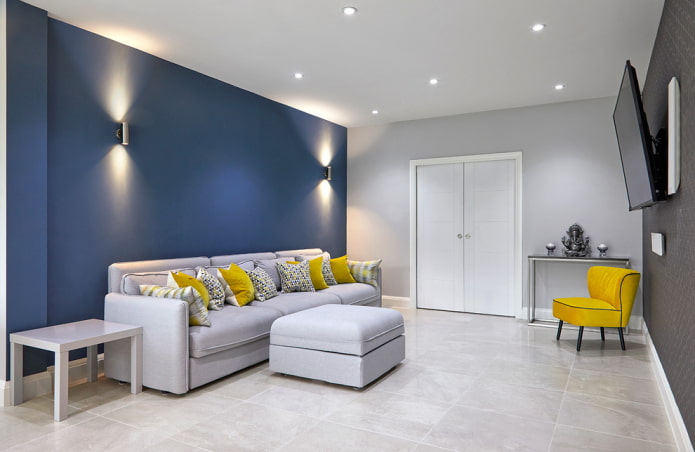
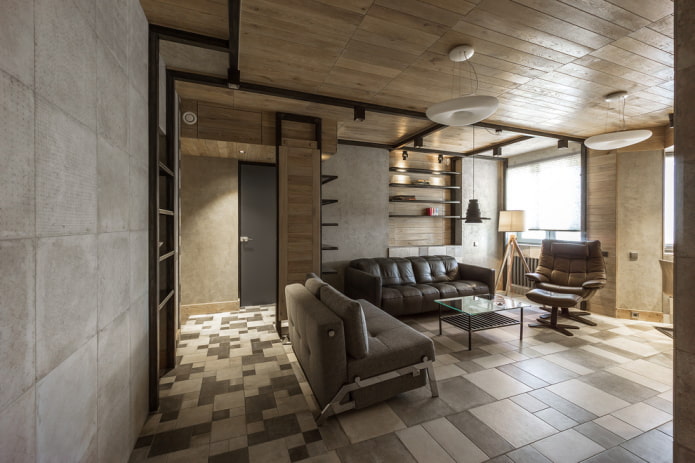
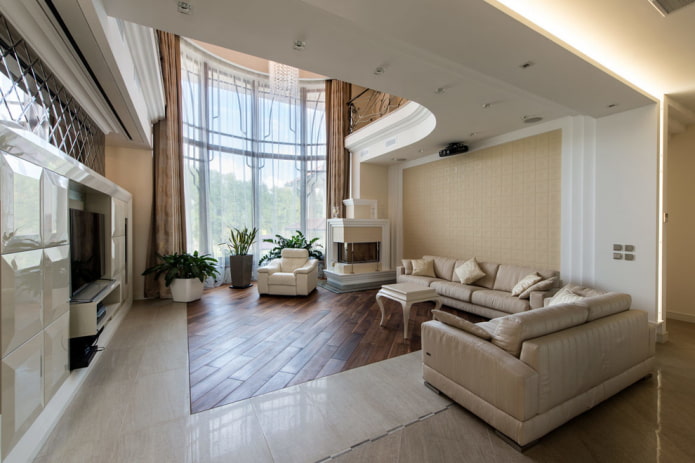

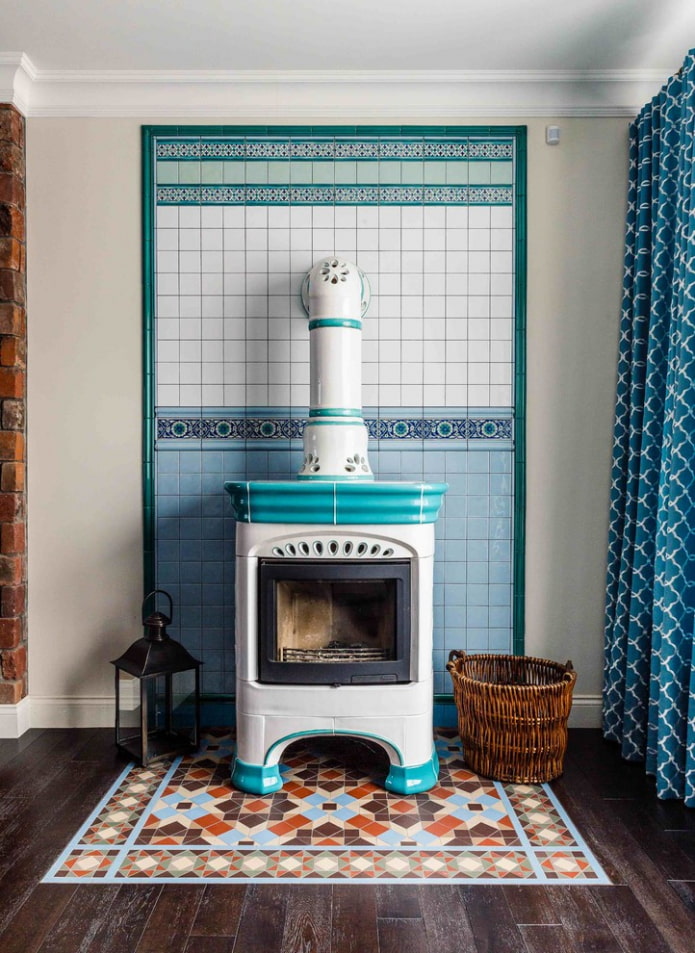
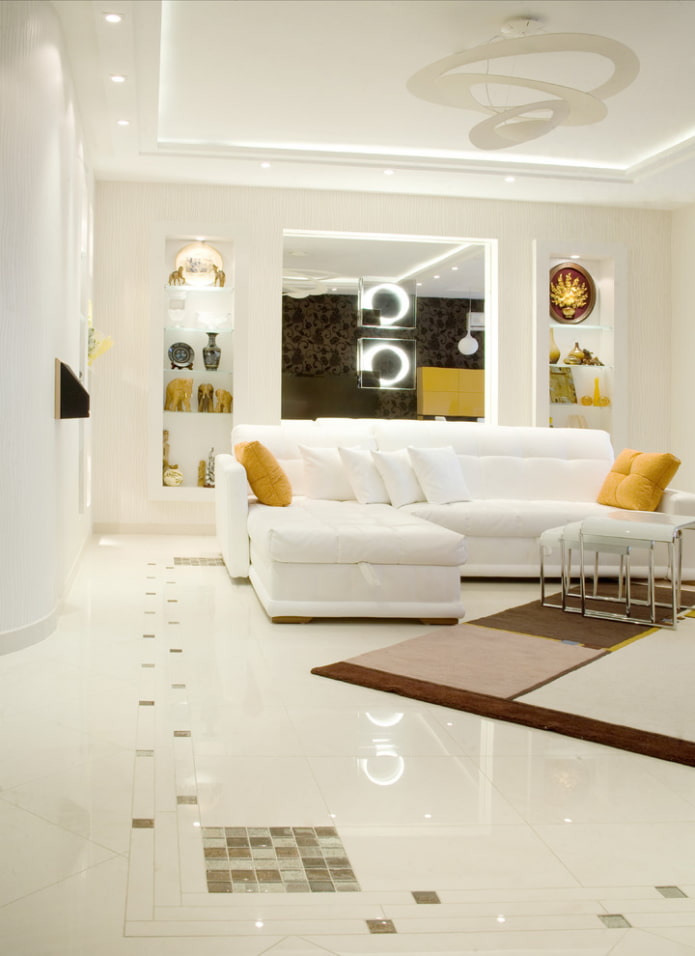
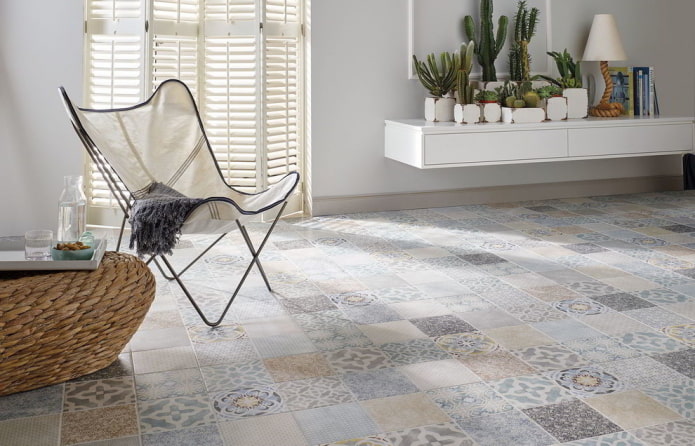
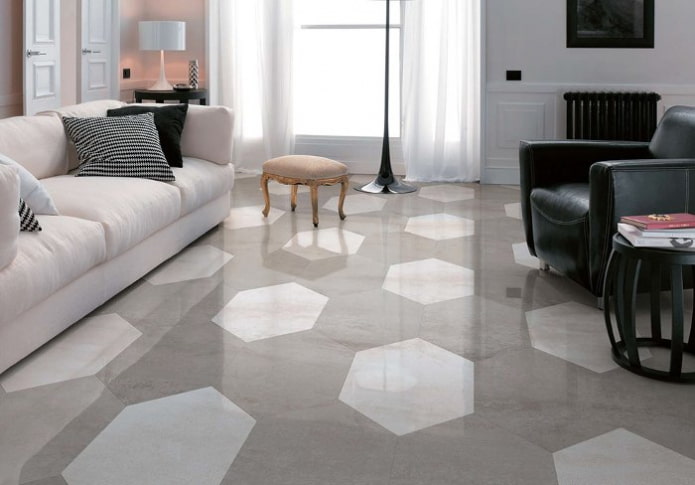
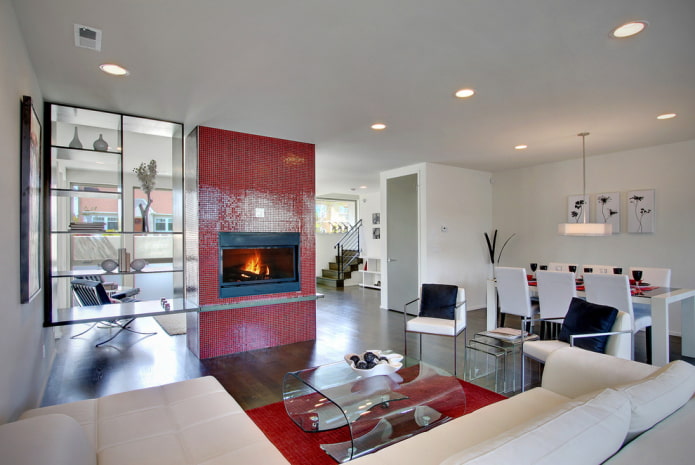
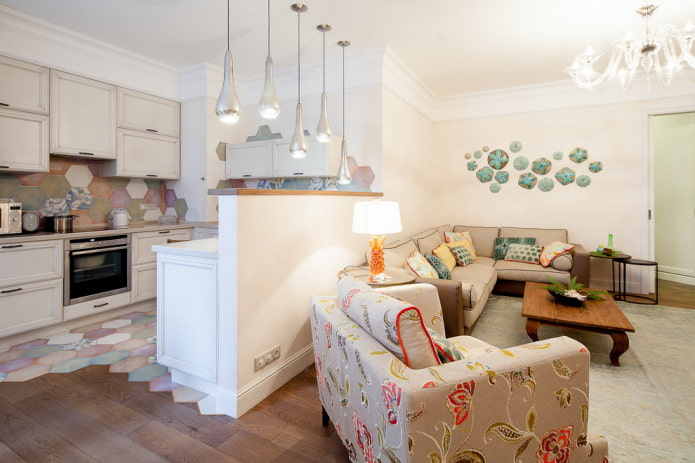
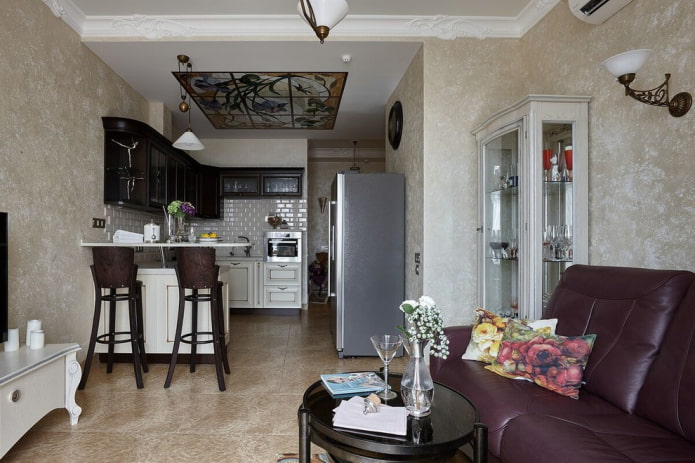
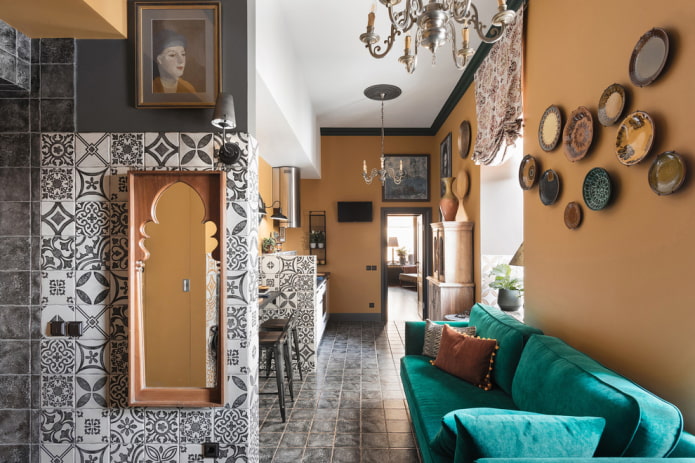

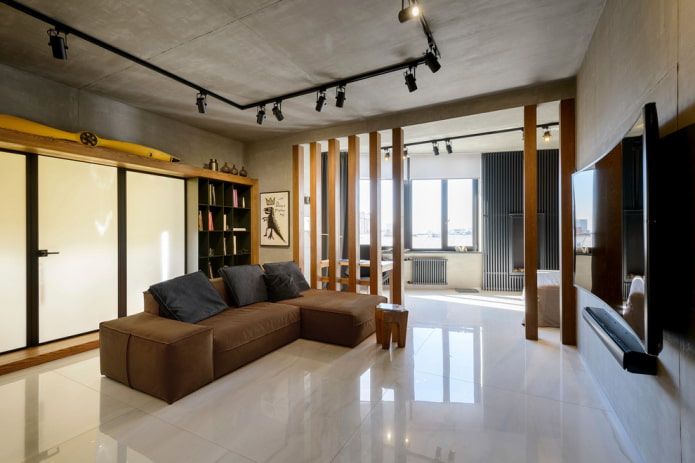
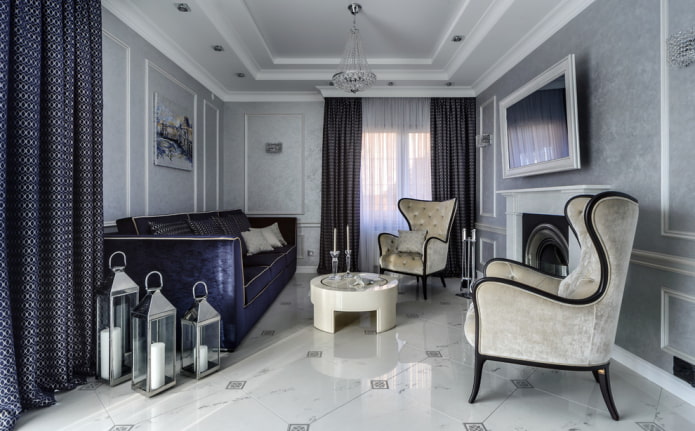
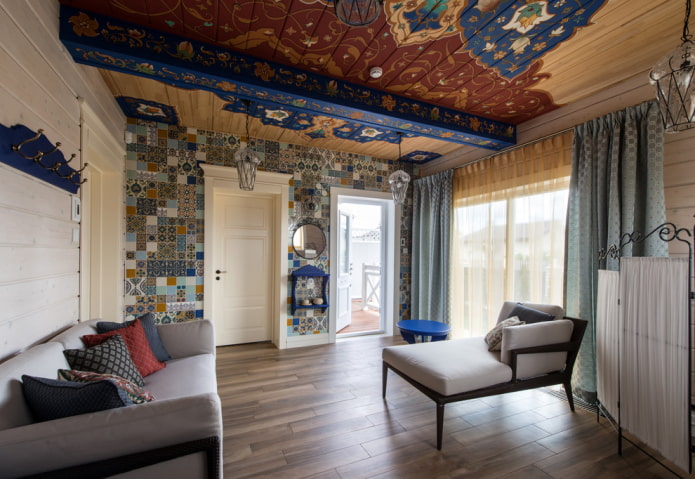
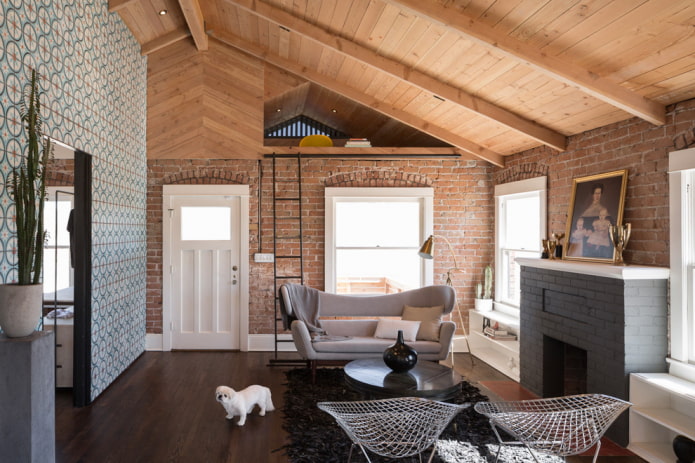
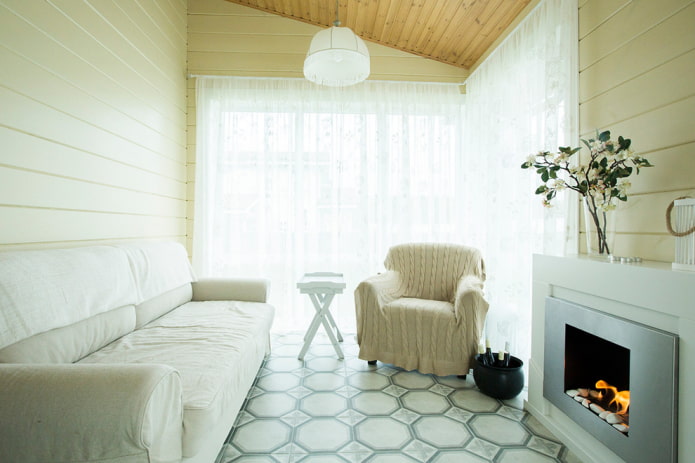
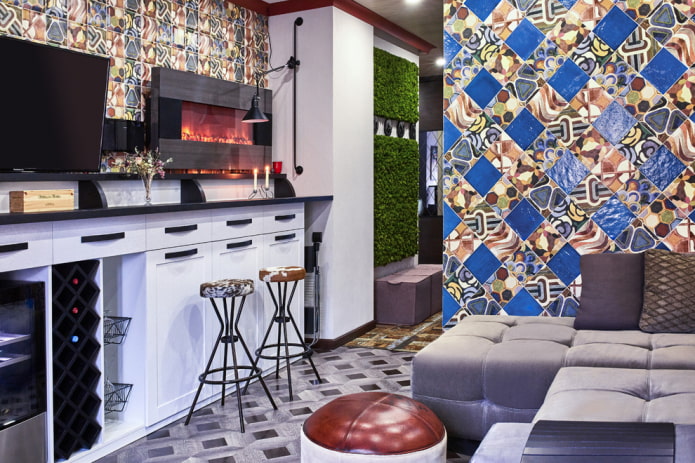


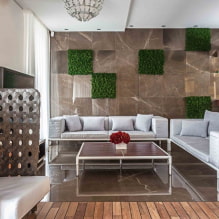
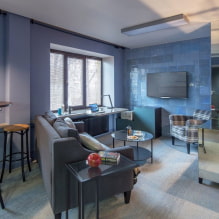
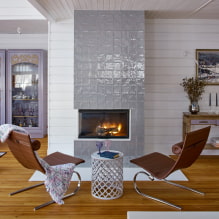
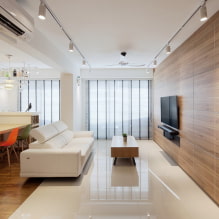
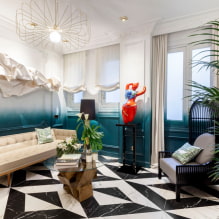

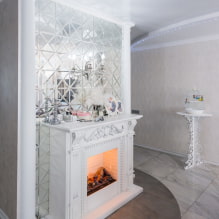
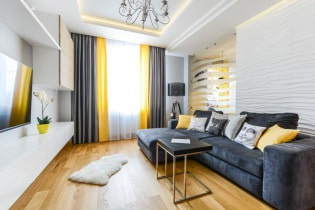 Choosing the best style of living room interior: 88 photos and ideas
Choosing the best style of living room interior: 88 photos and ideas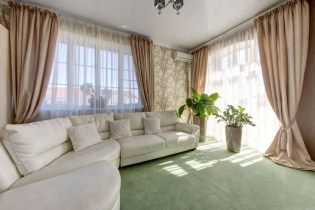 Curtains in the living room: 70 stylish photo ideas in the interior
Curtains in the living room: 70 stylish photo ideas in the interior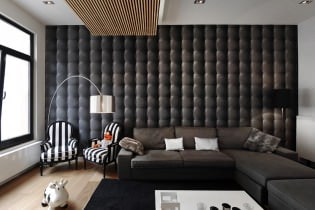 Wall decoration in the living room: choice of colors, finishes, accent wall in the interior
Wall decoration in the living room: choice of colors, finishes, accent wall in the interior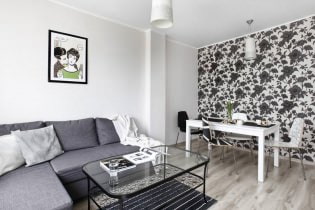 White and black and white wallpapers in the living room: 55 photos in the interior
White and black and white wallpapers in the living room: 55 photos in the interior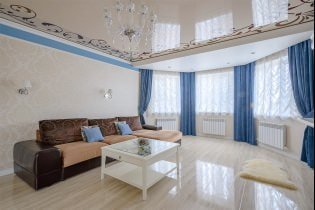 Stretch ceilings in the living room: views, design, lighting, 60 photos in the interior
Stretch ceilings in the living room: views, design, lighting, 60 photos in the interior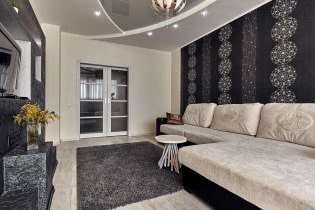 Wallpaper in the living room interior: 60 modern design options
Wallpaper in the living room interior: 60 modern design options